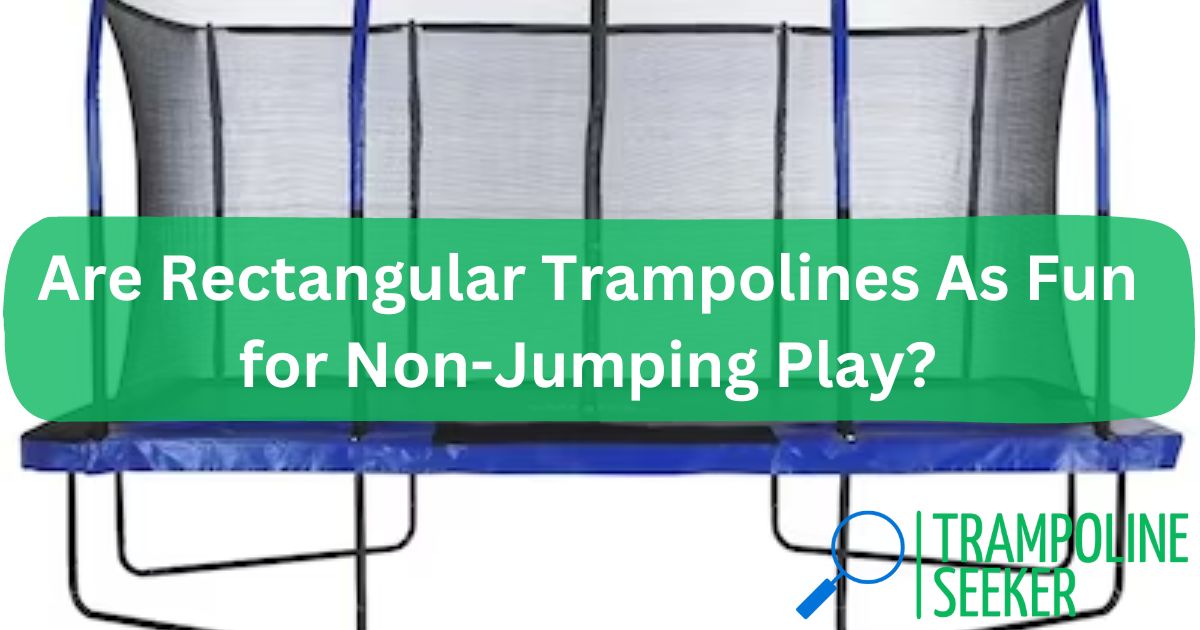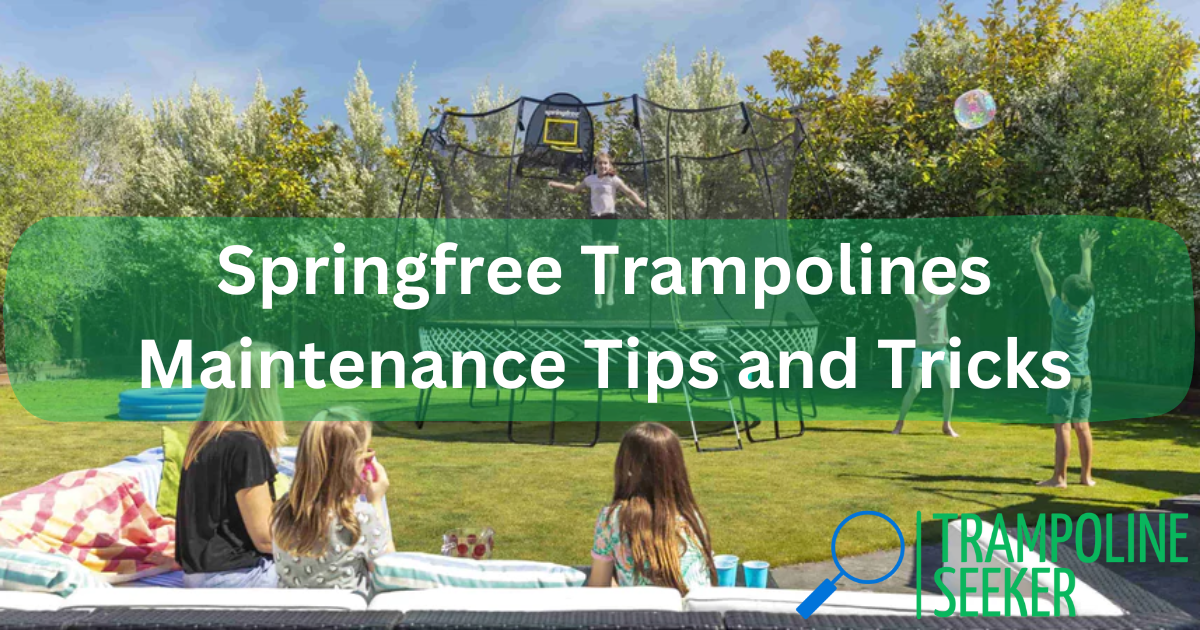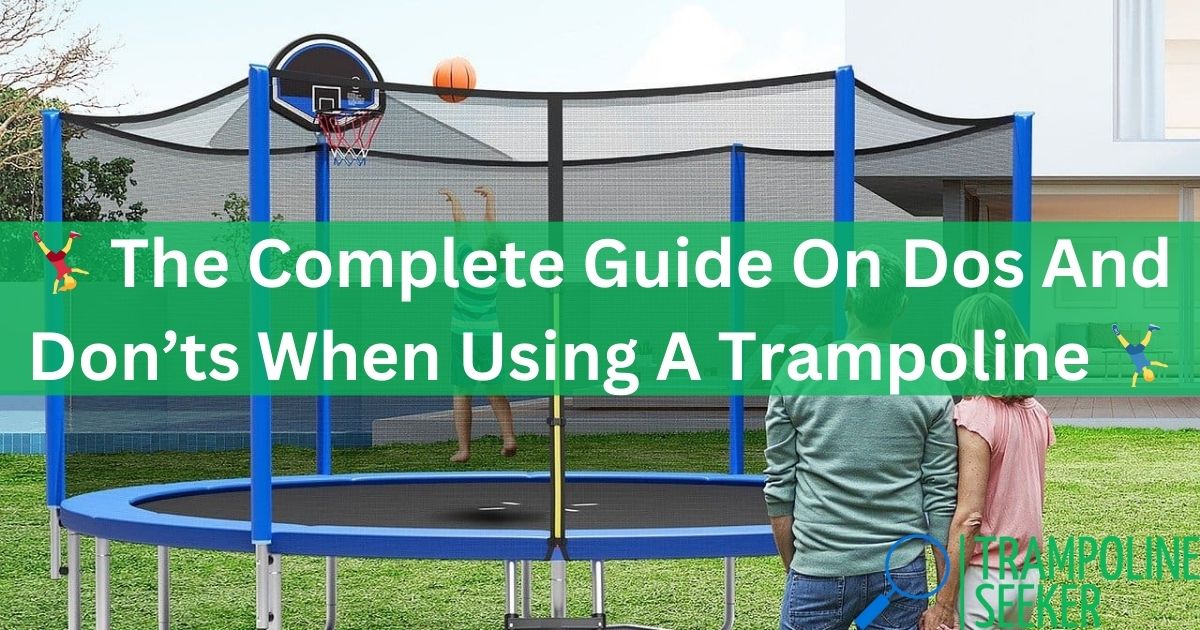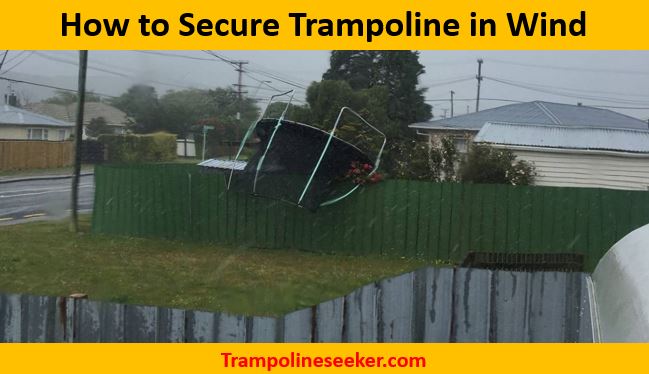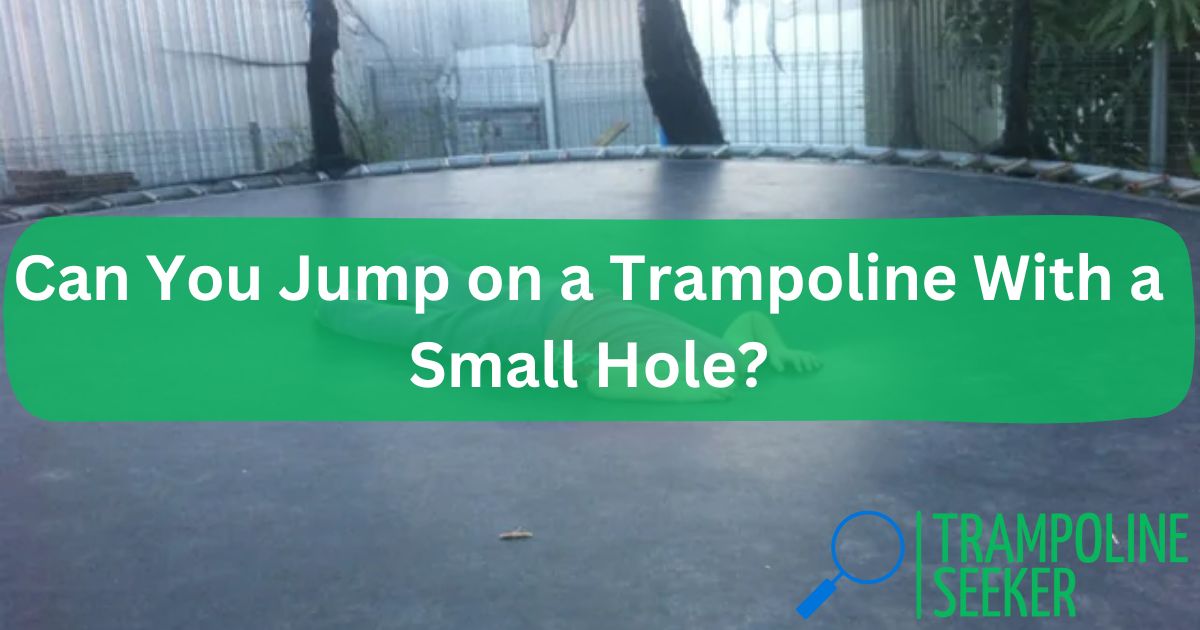Narrated by Mr. George, written by Ammar Masoud and edited by M Waqas Saeed.
I occasionally get asked by friends and family if some movement in the trampoline poles is normal. From my years of experience jumping on various trampoline models and brands, I have learned that a small amount of wobble or looseness is typical. However, excessive pole movement can indicate an underlying issue that should get addressed.
In this blog post, I’ll share my first-hand knowledge on whether trampoline poles are supposed to wobble. I’ll provide tips on inspecting new and existing trampolines to ensure optimal safety and function. I’ll also discuss when loose poles require replacement parts or professional repair.
Typical Pole Movement and Wobble
The poles on a trampoline serve the critical purpose of suspending the safety enclosure net around the jumping surface. This netting prevents jumpers from falling off the trampoline onto the ground.
The main vertical poles that attach the net around a round or rectangular trampoline do permit minor movement. These poles fit into pole sockets on the trampoline frame. While pole joints should feel snug, looser tolerances allow the poles to move slightly when shaken vigorously.
Based on my experience, here is the small pole movement I consider typical on properly functioning trampoline enclosures:
- Slight wobble – Poles will wobble slightly back-and-forth and side-to-side if purposefully shaken. We’re talking less than an inch or so of movement.
- Minimal rotation – Poles can rotate a few degrees clockwise and counter-clockwise in their sockets when turned by hand. The rotation should not exceed 45 degrees.
- No bending – Vertical poles should not bend or flex under reasonable lateral pressure. Some minor flexing represents the upper limit of normal.
As long as the trampoline components stay structurally intact, this amount of play in the poles does not affect performance or jumper safety. The netting remains taut and elevated at the proper height.
However, it is essential to periodically inspect poles and sockets for signs of damage over time. If rotation, wobbling, or bending exceeds these rough benchmarks, repairs may become necessary.
Inspecting Poles on New Trampolines
When assessing poles on a brand new trampoline right after assembly, use these tips:
- Test snugness – Try rotating and wobbling each installed pole manually. Check that joints feel tight and movement meets the guidelines discussed earlier.
- Watch netting – Press poles in different directions while observing the net. Make sure the net retains tension and does not sag when poles shift.
- Confirm verticality – Sight down poles from top to bottom. Verify they stand straight up 90 degrees from the trampoline frame.
- Shake rigorously – Finally, grab poles one at a time and aggressively shake up, down, and side-to-side. The most motion will occur near the top. But if properly secured, poles should not dislodge or damage any components.
Sometimes brand new trampoline poles arrive from the factory fitting loosely in their sockets. This can happen if machining tolerances between parts vary slightly. But simple fixes like tightening bolts or installing shims can remove excessive wobble in new poles.
Checking Wobble on Existing Trampoline Poles
To identify possible issues with poles on trampolines already in use:
- Compare looseness – Does the wobble seem more pronounced than when the trampoline was newer?
- Review use history – Estimate total jumping hours. More use naturally increases wear and looseness over time.
- Check for damage – Carefully inspect each pole and socket junction for cracks, rust, broken welds or fasteners.
- Assess net tautness – Press poles toward and away from the jumping surface. The net should remain suspended evenly around the perimeter.
If these checks reveal loosening beyond expected tolerances, replacing poles or tightening hardware may help restore proper function.
When Do Trampoline Poles Need Repair?
To maximize safety, trampoline pole repairs become necessary if poles:
- Rotate more than 60-90 degrees in sockets
- Wobble 2+ inches side-to-side or forward/backward
- Rust through over 50% of a vertical section
- Bend laterally more than 3 inches under moderate pressure
- Loosen enough for net height to variably drop 4+ inches
- Detach partially or completely from a pole socket
Repairs in these cases may involve:
- Tightening/replacing bolts or fasteners
- Replacing loose, worn, or damaged pole sections
- Shimming loose pole sockets
- Cleaning and lubricating parts
- Installing locking pins, screws, or clamps
For severely compromised poles no longer salvageable, full replacements matched to the specific trampoline model would be the best permanent solution.
Professional Trampoline Repairs
While DIY repairs are possible in many cases, I recommend contacting a professional trampoline service for repairs if:
- Loose or broken poles involve welded or intricate frame connections
- Multiple poles around the trampoline exhibit issues
- Correct replacement poles are difficult to source online/in stores
- Net height adjustment involves specialized proprietary hardware
Maintaining Pole Integrity
To help maximize trampoline pole lifespan and minimize repairs down the road:
- Use provided pole foam padding consistently to prevent weather decay
- Lubricate joints yearly to reduce corrosion from moisture and dirt
- Check and replace worn net attachment straps as needed
- Keep net entrance zippers and ties fastened when not in use
- Consider investing in steel poles rather than hollow aluminum poles
With routine inspections and care, quality poles should last over a decade before needing replacement. Jumping families can follow these best practices for getting years of safe enjoyment from their trampoline.
Related Blogs:
- How to Put Up Trampoline Net?
- How to Fix Trampoline Net?
- Importance of Having a Trampoline Enclosure Net
- Are Trampoline Nets Universal?
- How to Put Up Trampoline Net?
Common Trampoline Pole FAQs
Here I answer some frequent questions about trampoline pole wobble and integrity:
Are any trampoline poles designed to be rigidly fixed in place?
While most trampoline systems permit some expected movement, certain high-end or commercial models do secure poles more permanently inside sturdy frame sockets. This removal only for periodic replacement or net access.
Will loose poles affect the jumping experience?
Minimally. But severely loose poles can allow more net contact during bouncing. Optimal trampolining involves keeping clear of the enclosure.
Can weather or leaves cause poles to detach over time?
Absolutely – Exposure deteriorates socket connections and net straps, eventually allowing detachment in wind storms or from jumper contact unless repairs occur promptly.
How do I secure wobbling poles solidly to the frame?
Upgrading loose pole hardware is possible but often complex on assembled trampolines. Consider consulting a professional for custom reinforcements in risky cases.
Should I expect to replace my trampoline poles eventually?
Yes – With routine use, even quality poles require replacement every 8-12 years as material fatigue sets in. Budgeting for new poles can help avoid safety issues long-term.
Conclusion
Monitoring trampoline poles for integrity over their lifespan remains an essential safety practice for jumpers. A modest amount of play does not indicate poles are defective – but degradation over years of use will necessitate repairs or replacement.
With the guidance in this article, trampoline owners can confidently assess pole wobble during routine inspections. Catching issues early better protects excited kids and adults as they bounce freely within the safety enclosure year after year.
Articles You May Like to Read:





